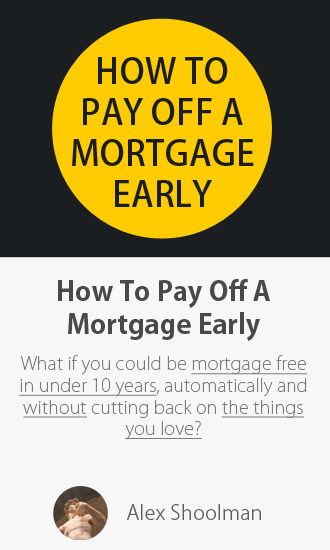Mortgage Insurance goes by many names around the world, from Private Mortgage Insurance (PMI), Lenders Mortgage Insurance (LMI), Mortgage Indemnity Guarantee (MIG) or even simply Mortgage Guarantee or Home-Loan Insurance however it’s all the same.
It is an insurance policy that protects the lender of the money (ie. not you!) in the event you default on the loan or stop paying.
Table of Contents
Who Pays For Lenders Mortgage Insurance or LMI?

Let’s start with a bit of bad news… you pay for it.
While this is unfortunate it does kind of make sense when you think about it. You’re the one that is requesting a loan and the bank is the one taking all the risk. Therefor they have more bargaining power and so can insist on you paying for it rather than them.
That being said it’s not all bad news as we’ll find out a bit later on.
How Is Lenders Mortgage Insurance Paid?
While it differs from lender to lender and even from country to country, there are only a certain amount of ways you can slice it.
- You pay for it all up front
- You pay for it in monthly payments
- You pay for some of it up front and some of it in monthly payments
When you pay for it all up front – common here in Australia – it’s simply added onto your entire loan. So if you originally wanted to get a $400,000 loan, you would then end up with $400,000 + whatever the Mortgage Insurance cost is.
If you do pay for it up front but then move or refinance the mortgage later on, you might not be able to get a refund of the premium. Paying for it in monthly instalments however – something more common in America – just adds the payment to your normal mortgage repayments.
Which one of these options will sometimes be up to you and sometimes enforced depending on which lender you’re going with and what country you’re in.
When Do You Pay For Mortgage Insurance?

If you’re living here in Australia, Mortgage Insurance or Lenders Mortgage Insurance (LMI) as it’s more commonly known here is generally required for any loan with a LVR of 80% or above.
The LVR is the Loan to Value Ratio, simply put, how much of the total house price you’re borrowing. To work out your LVR divide the amount of your home loan by the valuation.
For example if your property is worth $100,000 an 80% LVR means you can only borrow up to $80,000 before you need to pay Mortgage Insurance. Thus you would need a $20,000 deposit. If you only have a $10,000 deposit (a 90% LVR) then you will need to pay LMI.
America also has a similar 80% bar set for when borrowers will need to pay for Mortgage Insurance or Borrower Paid Private Mortgage Insurance (BPMI) as it’s known over there.
Again, this makes sense as the less deposit you have, the more risk the lender / bank is taking. That being said, Lenders Mortgage Insurance can have a big benefit for you the borrower too!
Saving vs Mortgage Insurance
A few years ago house prices here in Australia were increasing so quickly that even if you were diligently saving $50,000 a year for a deposit… it still wasn’t enough.
Home buyers would increase their deposit by $50,000 over the course of the year where as the house prices would sky rocket $100,000 leaving them still locked out of being able to purchase.
Also sometimes you may have part of a deposit and can easily pay for the mortgage repayments… but need to purchase the property quickly for whatever reason (moving / life changes etc). In these cases Mortgage Insurance can be your friend.
It allows you to buy a property faster with your smaller deposit while at the same time giving the lender the protection they need to lend you the money. As such, it’s not all bad news, however if at all possible you should avoid paying Mortgage Insurance.
How Much Does Mortgage Insurance Cost?
Obviously this is going to vary a lot depending on many different factors such as country, lender, your deposit as well as the current economic climate.
If house prices are booming and loans are being given out a dime a dozen then you might even be able to get it entirely waved and borrow more than 80% without paying anything!
Generally speaking though for those in America it will range from 0.32% to 1.20% of the loan amount per year depending on how much of a deposit you have.
For an example here in Australia, one of the big four banks (ANZ) says that it’s up front, one time only LMI fee is about 2% of the loan assuming you have a 10% deposit.
That would mean if you borrowed $500,000 and had a 10% deposit ($50,000) you’d be paying an additional $10,000 up front. Not a small sum!
To Pay Or Not To Pay

As Mortgage Insurance can be very, very expensive it’s pretty understandable that most don’t want to pay it. But what is the right sized home loan deposit? Is it 5%? 25%? 50%??
Ideally you never want to have to pay for Lenders Mortgage Insurance but life isn’t always ideal. That’s what I wrote a very in depth piece about how to find the deposit that’s right for you here.
Either way, hopefully you’re now much more up to speed on why this specific type of insurance policy exists and how it works. If you have any more questions or there’s something else you’d like clarification on feel free to comment down below, we read every one!
The benefits include: 1) How to pay off your mortgage faster than 99% of people with one hour a month of work 2) How to get rid of your debt and have the freedom to spend money on the things you love, guilt free 3) Clear outline of how to setup your expenses, mortgage and general finance 4) How offset accounts work and how to get the same result without being gouged by the big banks 5) How to cut through the crap and focus on the things that truly matter when taking down a mortgage 6) How to adjust the strategy so it works for you, even if you have kids, even if you only have one income 7) How to do all of these things and maintain a normal social life (and never be cheap).


